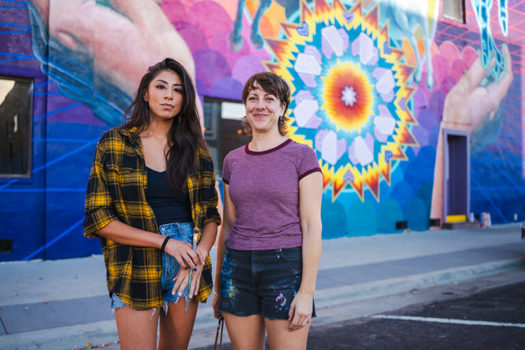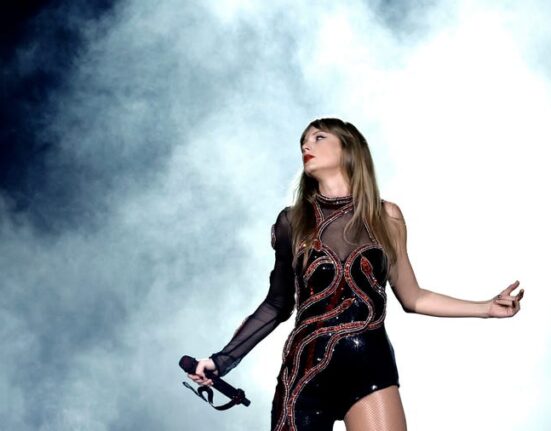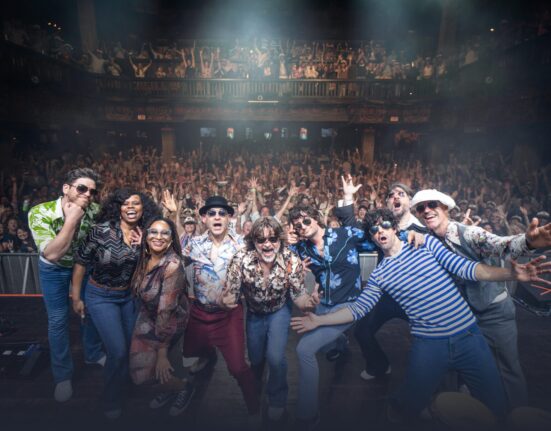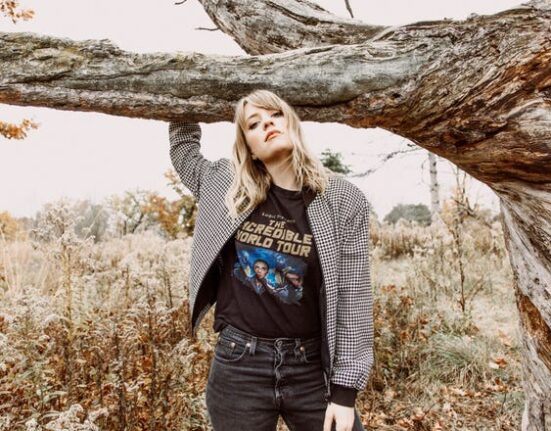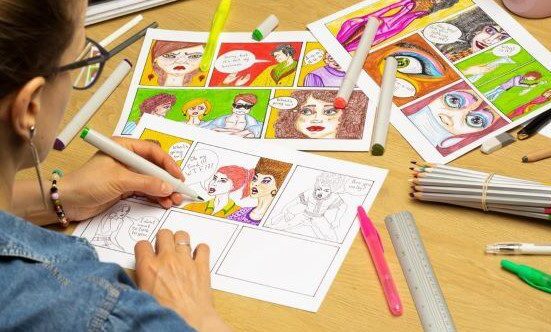By Rebecca Froehlich for Arts Midwest.
Broadcast version by Kathleen Shannon for Greater Dakota News Service reporting for the Arts Midwest-Public News Service Collaboration
Murals are fast becoming a staple of Midwestern towns, and the Mural On The Wall (Mural OTW) team approaches this familiar cultural touchstone with a surprising twist.
Most muralists are commissioned to portray a certain theme, in a specific place, using the artist’s signature style. Although the people who live and work in a space may walk by the mural every day once it’s finished, they have little say in the design. Mural OTW’s Amber Hansen, painting professor at the University of South Dakota and Reyna Hernandez, painter and muralist, create community-based murals that flip this model on its head.
When Mural OTW’s in town, you’re invited to take part in every step of the process.
“The murals we create are being imagined and designed with the people who utilize the space and have invited us to be there,” Hansen explains. “We don’t show up with a design ready to go. It unfolds as we meet with members of the community.”
Once a mural location is secured, the Mural OTW team invites the community to take part in design workshops. Rather than asking residents to sketch, the ideation sessions are usually filled with conversations, poetry, and storytelling which serve as fuel for the design team. “Each design workshop is tailored for that group of people, in that time, and that place,” Hansen elaborates. Through creative design approaches, the question of what represents a town is raised, and the answers go beyond naming iconic landmarks or sports mascots.
“Sharing stories helps people think about the place they live creatively. It’s not just the water tower or the railroad tracks. It’s a matter of pushing the way we see our communities. When we’re painting on the wall, and people see their ideas come together, they see the story of who they are as a community come together too,” says Hernandez.
There’s only so much square footage on each mural, and no way to represent every suggestion. Just as important as facilitating conversations is the art of editing.
“It’s like writing poetry, where you take large and complex feelings or attitudes and whittle them down just to what needs to be said,” Hernandez explains. “We take all the information we’ve gathered from our meetings and synthesize the ideas, being as intentional and careful as a poet is about the words they choose.”
A glance at Mural OTW’s portfolio reveals a wide array of mural projects, united by a monumental visual style that marries striking color combinations with detailed, skillfully rendered compositions.
Vermillion — South Dakota’s first community-based mural, according to the team, placed next to the nonprofit movie theater — highlights the town’s culture through lighthearted riffs on famous movie posters. A mural just a block away portrays two horses bursting above a detailed star quilt while another celebrates female role models and mothers. From Centerville to Sioux City, each mural is as unique as the community that helped bring it to life.
Community members can pitch in for the painting process, although Hernandez, Hansen, and local team members lead major aspects like projecting the image, outlining, and rendering details. They engage curious onlookers, prompting a collective sense of ownership over the design.
“This work is challenging, from the funding to the weather to organizing the meetings… and sometimes wasps,” Hansen laughs. “Yet it consistently feels like the most rewarding work. The artists we work with give generously to make this happen, and in response, the community meets that generosity in any way they can, whether it’s donating supplies or food or labor. The idea that it’s not just for us, but for everyone is inspiring.”
That spark of inspiration has spread to the wider community. Vermillion, Mural OTW’s homebase, has a wide range of current and finished mural projects, and past participants have gone on to organize projects of their own. If reading this made you curious, too, Hansen has this advice for you:
“I learned this process by working with other artists. You can start small. You can make a mural with just three people in the place where you live. It doesn’t even have to be on a wall. What does a collaborative painting look like with four of your friends? Painting can be a very solitary practice, but seeing something you helped make happen, from the first stages to finishing touches, can make other things feel more possible.”
Rebecca Froehlich wrote this story for Arts Midwest.

